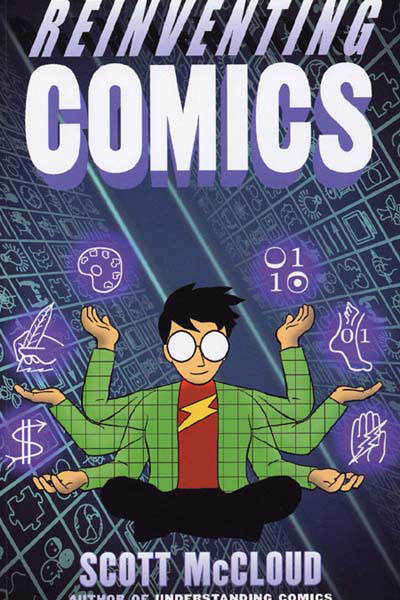|
Resources for Comickers
Selected links that are useful for each stage of the comic/graphic novel-making process. If you're just getting started, or want quick resources, look for the Note: These are all outside sites and sometimes they disappear without warning (sniff!) If you get an error message please let me know and I'll clean up the listing. |
|
Writing
|
|
Sequencing
|
|
Penciling
Tools: People and animals:
Clothing and folds: Backgrounds:
|
|
Inking
|
|
Coloring
Coloring:
Special effects
Shading:
|
|
Lettering
|
|
Printing & Publishing
Preparing your work for print:
Submitting to publishers:
Self-publishing:
Printing promotional items (stickers, buttons etc): ( |
|
Webpublishing
|
|
Marketing
|
|
Recommended books
For the making, theory and/or appreciation of sequential art.
Reinventing Comics is "something completely different". It's an essay in comic form about the comic industry as it stands, as it should ideally be, and as it may develop in the future. McCloud points out how comics are not yet exploring their full potential because they're still created them with a mindset tuned into other medias: moviemaking, art or writing. He acknowledges the rise of new medias that should completely revolutionize the way comics are made now they can be taken out of the limitations of ink on paper and into the "infinite canvas" of the web. The first part of the book examines 9 revolutions the comic professionals have been trying to achieve to upturn the status of comics: comics as literature, comics as art, creators' rights, industry innovation, public perception, institutional scrutiny, gender balance, minority representation and diversity of genre. The second part is dedicated to 3 more revolutions that the computer has introduced: digital production, digital delivery and digital comics. This is a very thought-provoking volume that explores the "greater area" of comics so that between it and Understanding Comics, no stone has been left unturned.
Drawing People is my own publication: Everything you need to know to draw the human figure, fully and clearly illustrated in full color. Chapters: - Introduction: Cultivating Your Drawing Skills - Drawing the body (comparative face and body anatomy for men and women, muscle diagrams, hands and feet, notes on balance and foreshortening) - Emotions and facial expressions (a study of a sample of 60 expressions with additional notes on posture, etc) - Flexibility (understand how and where the body bends) - Aging the face and body, detailed for men and women - Catalogue of human features (eye/hair/skin color, nose/eyebrow/eye/breast shapes, body types) - Guide to human types (detailed anatomic and facial characteristics of over 50 ethnotypes, from Ainu to Zulu, with notes on mixed types – no other such guide is in existence today) |
|
Other links of interest
Histoire de la Bande Dessinée autour du monde: Afrique Centrale - Brésil - Burkina Faso - Canada anglophone - Finlande - Guinée Equatoriale - Israël - Madagascar - la Réunion - Maroc - Maurice - Monde Arabe - Seychelles |





